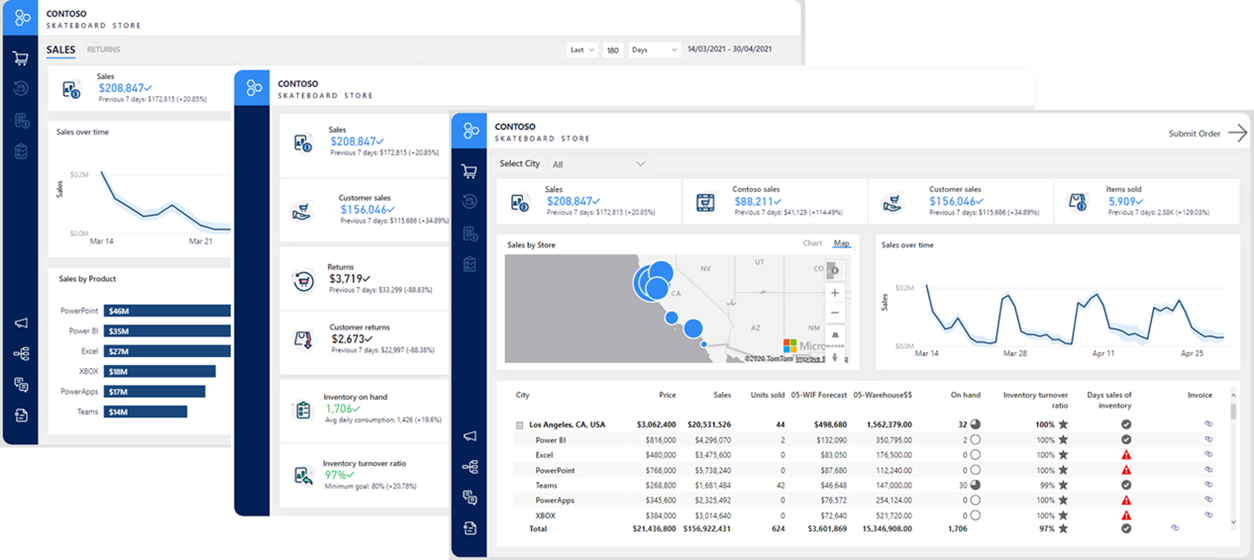Introduction
As with any project, a good starting point when designing reports is to define clear goals. In your reporting project, those goals should strive to help you determine your reporting requirements for:
Audiences
Report type
User interface requirements
User experience requirements
This module uses a scenario concerning the Contoso Skateboard Store company, which specializes in direct-to-consumer skateboard sales. To modernize their workflow and gain a deeper understanding of their product sales and inventory management, the company needs to create a set of reports to deliver data to their employees.
Currently, the finance and supply chain divisions operate in vertical silos. These divisions use data differently, which has resulted in many inconsistencies in how they interpret the data when making decisions. These inconsistencies have often led to disagreements and misalignment at the executive level because the numbers don't match.
Also, the company currently consumes this information by using formats that aren't optimized for a modern workforce. Also, employees commonly spend many hours creating improvised reports by using disparate data sources. These reports answer simple questions like "What were our sales in the Los Angeles area last month?" These improvised reports have contributed to a duplication of effort, resulting in an overlapping of reports that might occasionally use different calculation logic over the same data.
The company has committed to developing a new suite of reports to meet the following business requirements:
Promote a standard view of their data and business logic that is a single source of truth across all divisions.
Ensure reports deliver up-to-date data that is no older than 24 hours for sales and one hour for inventory.
Create modern sales and inventory reports that can be accessed at any time by their employees, whether they are in the office, working from home, or on the road. Reports are intended for use by finance managers, supply chain managers, and data analysts.
Design reports that feel natural and are user-friendly.
Publish reports that have sufficient depth of detail and allow report consumers to discover new insights.
Apply consistent corporate brand standards.
